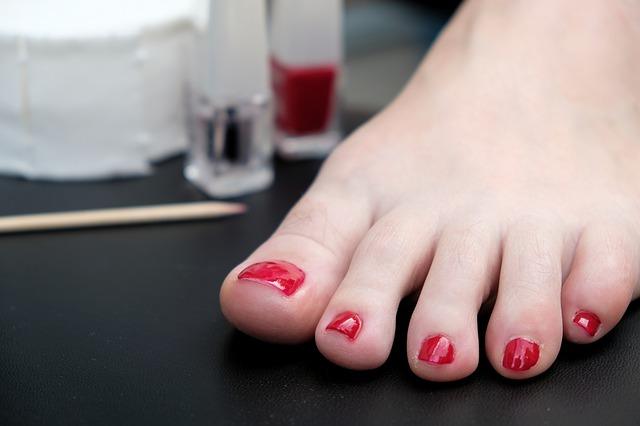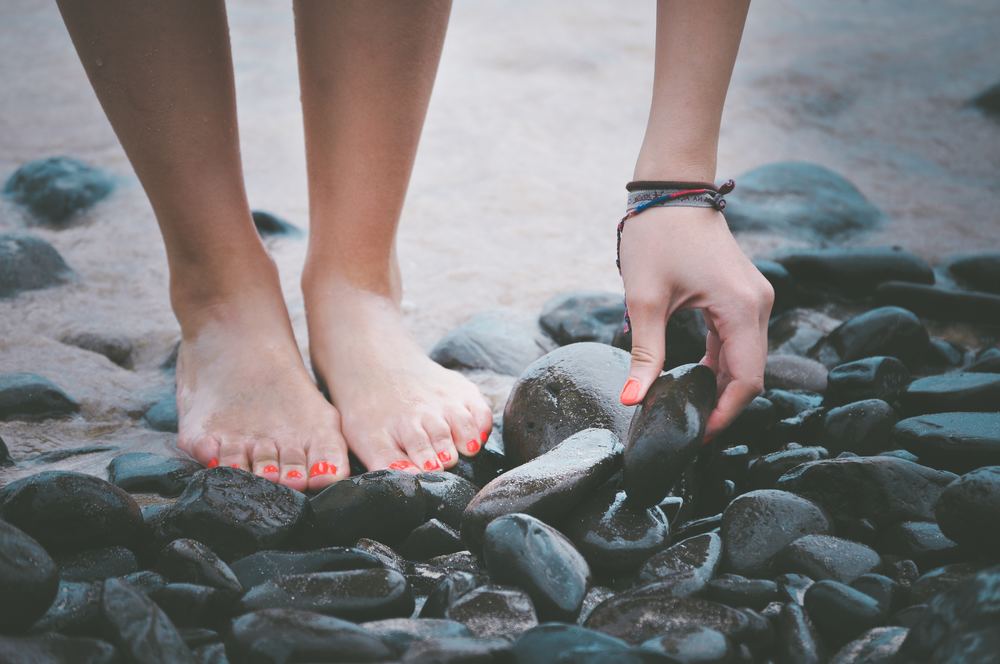Few things are quite as unpleasant as ingrown toenails. They’re painful, unsightly, and make wearing certain footwear difficult.
The important thing to know is that ingrown toenails are common and easily treatable.

Very rarely do ingrown nails require a doctor’s attention. Though, there are times when toenail removal is necessary.
Don’t freak out yet! Let’s go over the basics first, so you can better understand what’s happening if there is a problem, and how to treat it.
Contents
What are the Signs of Ingrown Toenails
Ingrown toenails are most commonly found on the big toe.
A number of the first signs indicating an ingrown toenail are mild swelling, reddened skin, and pain when pressure is placed on the afflicted toe.
If left untreated, the pain will worsen and a yellow, pus-like liquid will begin to collect and drain from the wound.
This isn’t necessarily an infection yet, but when it becomes one, the swelling will worsen, as will the pain before pus will begin to drain from the area.
At this stage, seeing a doctor is strongly advised.
What Causes Ingrown Toenails
An ingrown toenail is when the sharp corners of the nail dig into the skin, causing pain, inflammation, scarring, and pus to develop.
There are a number of reasons why a toenail might become ingrown.
Ill-Sized Shoes
Remember when your parents would take you to the shoe store?
They would make you put on some oversized sneakers (but not the ones with the cool designs that you desperately wanted), have you wiggle your toes, and say ‘you’ll grow into them.’
Thing is, they had the right idea. Shoes that pinch your toes together or place a strain on your feet, like high heels, can cause the nail to grow abnormally.
High heels may look good, but at what cost?
Improper Nail Trimming
Some might think that rounding off the sharp corners when trimming their nails is the right thing to do. It’s not.

By trimming your nails with a rounded edge, you’re increasing the chances of the nail growing into the skin. Keep trims straight to avoid this issue.
Trauma
At one point, we’ve all dropped something on our foot. Aside from cussing up a storm, this sort of trauma can cause us to develop an ingrown toenail.
Certain activities can warp the nail over time too. This usually occurs through repeated trauma such as soccer, dancing, and kickboxing.
Getting proper footwear for such activities to protect the foot is one thing you can do to lower the risk of forming an ingrown toenail.
Infection
Fungal and bacterial infections can cause the nail to thicken or widen over time, to the point where it grows into the skin.
If these infections are left untreated, they can spread to the new wound and cause the ingrown toenail to evolve into a more serious issue.
Genetics
Yeah, ingrown toenails are totally something that you can blame on your genetics. Thanks, Mom and Dad.
It all comes down to how your bones are shaped and how your nails grow naturally; some people are genetically predisposed to developing ingrown toenails.
How to Remove a Toenail That’s Ingrown
Ingrown toenail removal is a last resort in most cases. Typically, completely lifting the nail from the bed is only done when the infection is extensive or an abscess has developed.
This is only for the worst of ingrown toenails. There are several methods you can use, at home, to prevent and treat it in its early stages. For the best results, try using all of them together.
It is important to note, though, that if you use any of these methods and see no improvement within three days, it is time to see a doctor.

Foot Baths
Soak the afflicted foot in warm water four times a day, and wash it twice with soap.
This is only particularly useful in the very early stages of an ingrown nail and should be used in conjunction with one or more of the methods below.
(Keep the foot as dry as possible for the rest of the day too.)
Break out the Flip Flops
Let your toes breathe. If you can get away with it, wear open-toed shoes. Avoid tight-fitting shoes and high heels.
It’s a good idea to invest in shoes that give your toes some wiggle room to help prevent ingrown toes from developing again.
Lift
This is the most painful method, and also the most necessary one. Using sterilized tweezers, lift up the corner of the nail that is growing into the skin.
Then, taking a small piece of gauze or cotton, roll it into a small roll. Place this between the nail and the skin to keep the nail elevated.
Yep. It is just as unpleasant as it sounds. Replace the gauze every day, and keep a close eye on any changes. The nail should eventually grow out enough that it won’t curl into the skin.
Learning how to remove a toenail is a quick (though not easy for those with a low pain tolerance), way to keep an ingrown toenail from springing an infection.
Do you have any tips for toenail removal?

